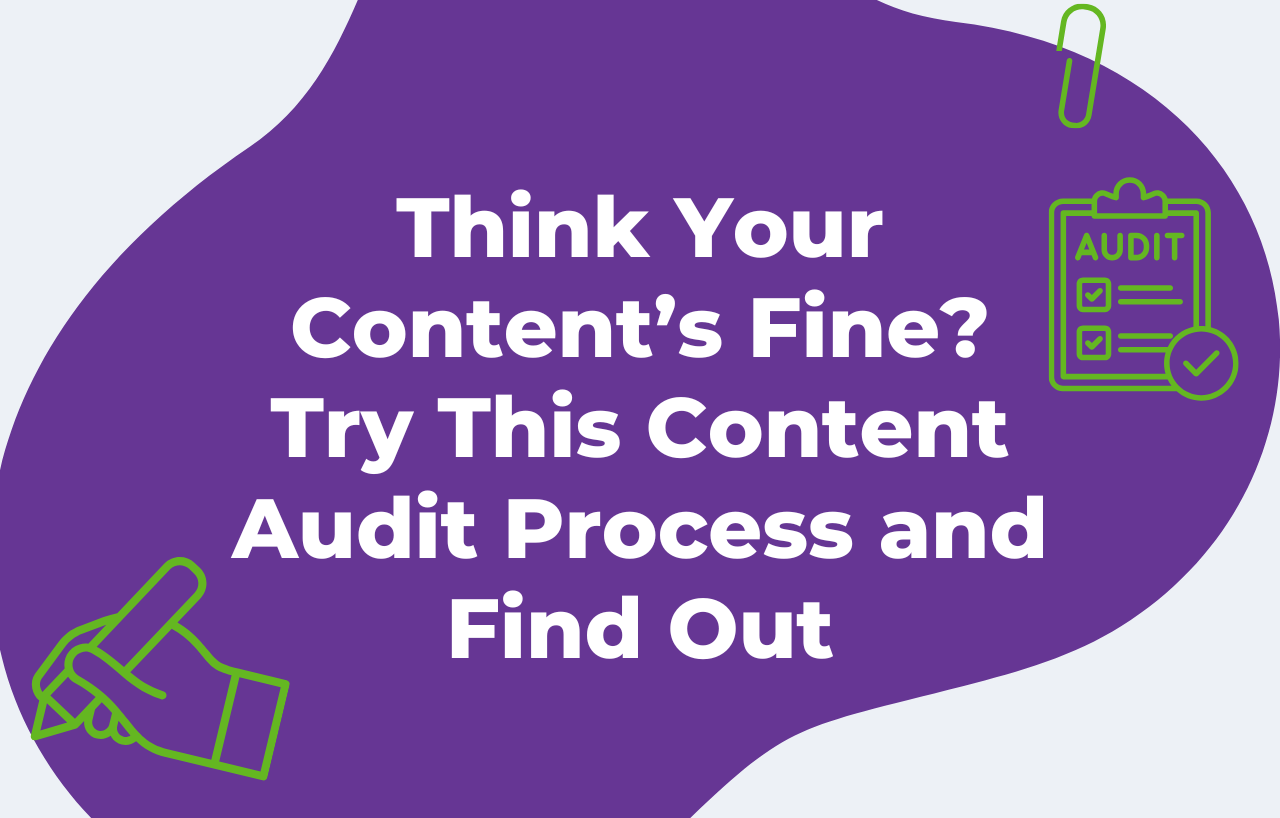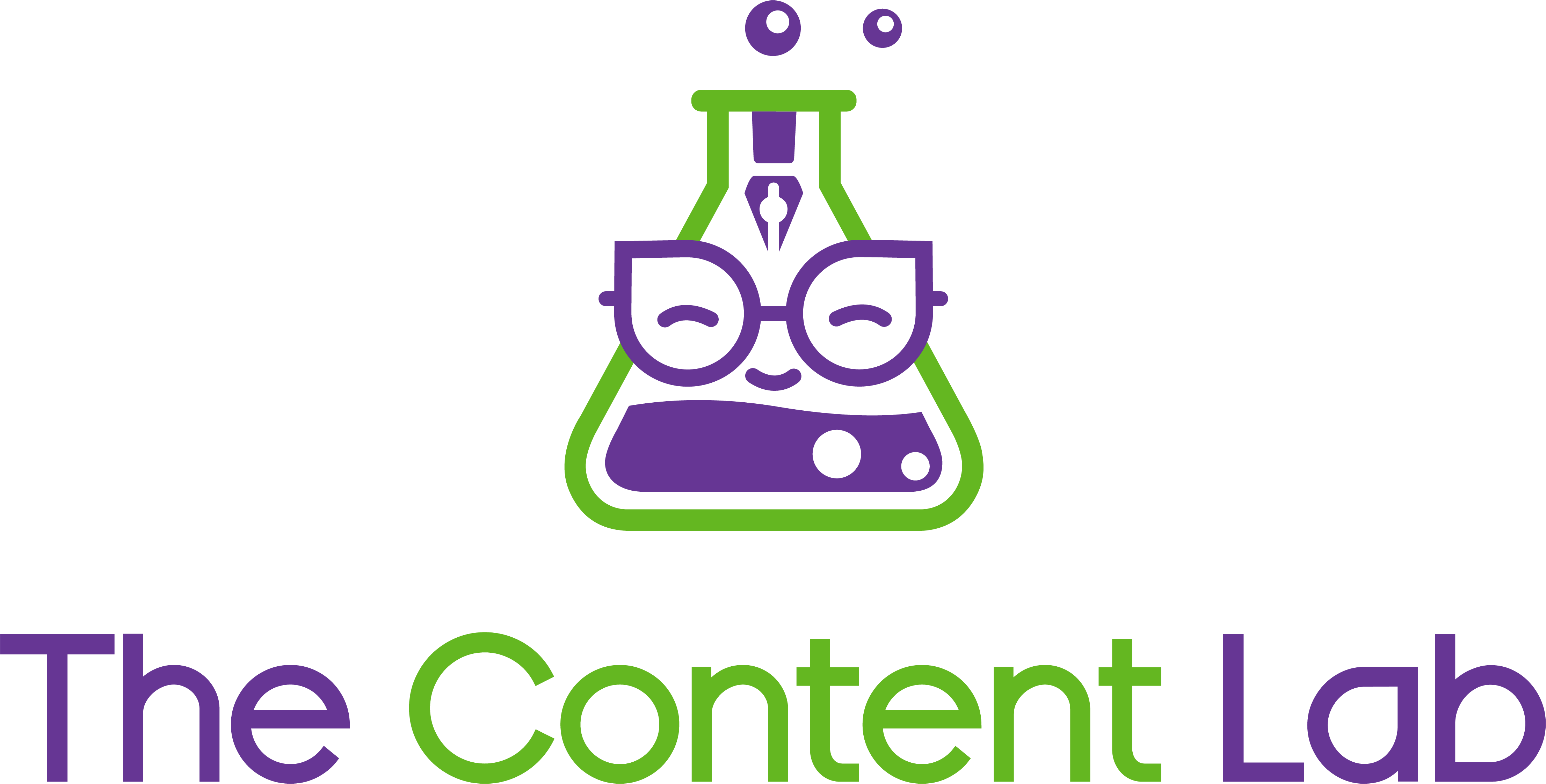Writing and technology have always gone hand-in-hand.
After all, the very first written word would never have been penned without…well, a pen. Or paint and a cave wall. Or a hammer and chisel. Or feather and ink. The point is, we’ve always needed tools to put our thoughts into writing, to revise them, refine them, share them, and preserve them for future generations.
Today, these tools are a lot more advanced than they used to be.
The modern writer can take their choice of writing tech, from the good auld pen and paper to a keyboard and computer screen. Some writers even use speech-to-text technology to write on the go.
And the same is true for editors – some prefer the traditional red pen, while others use Suggestion Mode in Google Docs (or Review Mode in Microsoft Word) for easy collaboration and instant implementation.
And now, artificial intelligence (AI) is another tool at our disposal.
There are AI tools to help you brainstorm a title, outline, or body copy for a blog post, email, or landing page. You can use an AI editor to proofread and edit your text once it’s written. And with generative AI, you can create whole websites’ worth of content in a matter of minutes.

But should you? What will it mean for the content marketing industry if AI gains more ground?
With all its capabilities, it’s understandable to ask yourself: “Will AI tools eventually replace human writers?” As an editor, I sometimes worry that AI could come for my job, too.

So, before we go any further, let’s get one thing absolutely clear:
We believe that the most effective copy is written for humans by humans. For that reason, the Content Lab team does not use artificial intelligence to generate any written content. Not for ourselves, and DEFINITELY not for our clients.
Depending on your approach, AI can be a valuable tool, helping you streamline your processes and brainstorm ideas when you’re feeling stuck. But, there are a few things even the most advanced AI still can’t do (at least, not yet!).
In this blog, I’ll explain why people use AI to write and edit their work, what you can and can’t do with AI, and what it all might mean for us human writers and editors trying to keep copy human.
Why People Use AI to Write and Edit Copy
If you’ve already incorporated AI tools into your copywriting or editing process, you’re definitely not alone. Many marketing experts and editorial professionals are giving it a go. Here’s why:
Time & Money
You’re on deadline and the budget’s getting thin. When time is short and money is tight, AI tools offer a quick and cheap solution. AI never sleeps, it can churn out copy or scan text for errors in seconds, and it often costs next to nothing (at least, up front…).
Perceived Quality & Consistency
AI tools seem to know all the rules of spelling, grammar, and punctuation, and they’ve been trained on high-performing conversion copy. At a glance, AI-generated content might look and sound almost as good as the real thing. Almost.
Data-driven SEO & Results
AI knows numbers – after all, it eats data for breakfast, lunch, and dinner. So, it stands to reason that using AI to write, edit, and optimise your copy would deliver the best possible results. AI content should get top billing in search engines, connect instantly with your intended audience, and drive conversions like never before…right? (Spoiler: wrong.)
Feeling Stuck & Uninspired
There’s nothing worse than the dreaded blank page when you’re trying to craft quality content. Especially when you’re already under pressure. When you’re feeling stuck, it’s reeeeally tempting to turn it over to AI and let the robots take care of it for you.
Why They Shouldn’t
It turns out, a lot of the reasons you might want to let AI take the wheel are the same reasons you probably shouldn’t. Here’s why you might be better off writing and editing yourself:
Creativity & Authenticity
Creativity is a muscle. If you don’t give it a good workout now and then, it’ll only get weaker. As hard as it is to think up ideas when you’re pressed for time, you can lose your creative capacity altogether if you get hooked on AI shortcuts.
Plus, you run the risk of losing your authentic voice, too. AI trains itself on everything that’s fed into it, and without your unique approach and creativity, all AI-written content starts to sound the same. And the last thing you want is to sound exactly like everyone else.
Better SEO & Results
AI-powered tools are great for giving you a headstart on keyword research and search engine optimisation. But they’ll never understand your clients (or their audiences) as well as you do. Even with all the right keywords in place, without that human-to-human connection, your visibility can suffer and conversion rates can sink. Those aren’t the results your agency or your clients deserve.


Actual Quality & Consistency
To the untrained eye, AI-generated copy might seem like the real deal. But when you take a closer look, you’ll find unnecessary repetition, rigid structures, and clunky, surface-level language empty of character or meaning. You can do better than that!
Time & Money
AI might be able to generate a blog, a landing page, or an ebook in seconds – maybe even without spending a dime. But as a writer, you can’t just copy and paste that content and hit ‘post’ or ‘publish’. And as an editor, you can’t just accept every suggestion an AI tool makes to correct or improve your copy.
You’ll have to assess every correction, fact-check every claim, and heavily rewrite the content to address your target audience and align with your unique voice and tone. You know what that’s gonna cost you? Time. Money. Probably as much as it would have taken to write and edit the whole project yourself – and potentially more.
And these aren’t the only risks to consider. There are a few more factors at stake when you outsource the content creation process to artificial intelligence:
Context & Nuance
Current generative AI models and AI-powered editors can only respond to the prompts they’re given. And to do that, they rely on the language and data they’ve been trained on. That leaves a pretty big margin of error when it comes to understanding nuance and seeing your piece of content within a wider context. You may end up with generic copy that doesn’t resonate with the audience you’re trying to reach.
And if you use cultural language and conversational grammar, the AI editor you’re working with may misinterpret the content and suggest edits that weaken the work.
Potential Inaccuracy
Your agency and the clients you serve have reputations to protect. People trust you to deliver reliable value, real insights, and relevant guidance. You can’t afford to risk losing that trust by publishing content riddled with inaccuracies. You’ll have to check and double-check everything you make with AI to be sure it’s all above board.
Risk of Thought Theft & Plagiarism
Not the dreaded P-word! 😱 Unfortunately, this is a real concern when working with AI, even as an editor. Again, because AI tools are trained on human-written content, there’s a chance that there are bits of copyright-protected material hidden in the copy they create. Trust me, the time and money you might save with AI aren’t worth the reputational damage and potential legal consequences you’ll face if you plagiarise – even by accident.

Why Human Editors and Copywriters Are Worried
Given everything we know about AI so far, it’s easy to see why professionals in a wide range of industries are feeling a little (or extremely) uneasy these days. AI is fast, it’s cheap, and it’s improving rapidly.
AI can now perform a lot of the tasks it took us all years of study and practice to perfect. And as the economy shifts, clients and competitors looking for corners to cut may try to use AI to edge us out of the race.
Why They Shouldn’t Be

The good news is, despite its appealing advancements, AI still can’t quite compete with human writers and editors. Here’s why:
Creative Thought > Cookie Cutter Content
AI can analyse user intent and behaviour and spit out its best guess at a strategy. But you don’t guess. You get to know your clients and their audiences well enough to relate, human-to-human. You have the creative capacity to craft a unique, engaging voice designed to deliver each client’s messaging effectively – and the emotional intelligence to make that message resonate.
Your strategies aren’t just data-driven, they’re flexible enough to pivot when the unexpected happens and crafted to connect on an emotional level. And that’s all thanks to your human creativity, my friend.
We Know When to Break the Rules
As a professional writer or editor, it’s your job to know the rules of the road when it comes to grammar and punctuation. But it’s just as important to know when you can break those rules to make an impact or to keep your copy conversational. AI editors will see the conjunction and the beginning of your sentence, preposition at the end, and your creative use of sentence fragments and try to “fix” them for you. Human editors know when “mistakes” like these actually work to your advantage.
Empathy
AI doesn’t get your jokes, it can’t feel your pain, and it hasn’t walked in anybody’s shoes. You go deep while AI skims the surface. That’s why human writers (and editors) will always outpace AI when it comes to expressing – and evoking – emotion.
And at the end of the day, empathy is one of the most effective marketing tools we have. The more deeply we understand and relate with how other humans feel, the more connected we are, the more we trust each other, and the better service we can offer.
What AI Editors Can Do
Remember this blog Eithne wrote about how we do (and don’t) use AI copywriting tools in our agency? She makes a lot of great points about how to use artificial intelligence to your benefit – and when to set it aside and let your genuine intelligence take the wheel.
Here, I’ll give you the Dos and Don’ts from an editor’s point of view! An AI editor can help you:
- Detect and correct mistakes like spelling, punctuation, and grammatical errors
- Improve readability or clarity, simplifying your language and splitting up long, complex sentences (sometimes scraping out SEO keywords in the process)
- Adjust your delivery, removing certain ‘hedging’ or qualifying language to boost ‘confidence’, or adding some to ‘sound more diplomatic’
- Strengthen ‘weak’ language by pointing out the passive voice, or extra adjectives and adverbs fluffing up the work
- Optimise your copy for better search engine ranking (Note: you’ll need a special AI tool like Surfer SEO or for this!)
Caveat: Again, AI editors can help, but they’re not a set-it-and-forget-it kind of solution. You’ll have to double-check corrections, carefully consider suggestions, and implement optimisation strategically to avoid keyword stuffing.
What AI Editors Can’t Do

As nice as it would be to wave a magic wand (or hit a magic button) and get totally unique, flawlessly edited content, sadly, it just doesn’t work that way. An AI editing tool might be fast, but it can’t:
- Improve organisation by rearranging the structure or smoothing out the flow of the text
- Fact check or strengthen credibility by ensuring accuracy, integrity, and consistency throughout each blog post, article, webpage, email, and social media post you create
- Understand detail-level nuance, including anything from metaphors and images to highly-localised or niche cultural terms
- Provide personalised feedback to help you refine your writing over time
And on top of all that…
AI can’t actually read. It doesn’t think. It’s not capable of creating an idea of its own. It can’t even guarantee your text is free of errors or inconsistencies – something it’s supposed to be better at than professional human editors.
It can only interpret the data points fed into it and synthesise it into a response. Granted, that’s no small feat, and some tools have gotten very good at it. But that’s all it can do.
And you might be thinking: “Yeah, but…isn’t that also how we humans work? Don’t we take in information and formulate responses based on what we’ve learned and understood about the world?”
And you’re right. But the information we have – the data set we pull our ideas from – is a million times vaster than what AI has to work with. I mean, sure, AI tools have tapped into basically everything on the internet. But…
We’ve seen sunsets, heard symphonies. We’ve tasted birthday cake, crushed sand between our toes. We know what an autumn day smells like.
And our responses to that input are emotional and sometimes visceral. We’ve grieved, and we’ve comforted each other in grief. We’ve trembled in fear – and excitement. We’ve been tired and cold and hungry and happy and curious. We’ve laughed so hard we’ve peed our pants (…no? Just me? Whoops…).
We don’t just understand these things at surface level. We’ve lived them. We don’t just synthesise information we’ve been given. We interpret it, find meaning in it, and draw creative connections.
That is where our writing comes from. And without that, there will always be a limit to how well AI can imitate the human voice.
Keep Your Copy Human
We know how tempting it can be to take a shortcut – especially when you’re pressed for time, short on funds, and up to your ears in stress.
But from what we’ve seen so far, generative AI and AI editors still can’t deliver the kind of quality, value, and personality you and your clients expect – or the results you deserve.
Not happy with the copy ChatGPT just handed you? We’ve got a team of human copywriting experts and an in-house human editor-slash-proofreader that can fix it. Need to start from scratch? No problem! Ask about our copywriting and copyediting services or get in touch today, and let us help make your good content great.
Other Posts
 Content Marketing
Content Marketing Think Your Content’s Fine? Try This Content Audit Process and Find Out
 Content Marketing
Content Marketing How One Branding Workshop Can Do What Six Strategy Decks Can’t
 Content Marketing
Content Marketing 

